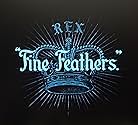Continuing from the dichotomy Lois Weber established or had established (given that it's difficult to track a filmmaker's progress when so much of it's now lost) by "From Death to Life" (1911), "Fine Feathers" features another early instance of the formula that would make one of the greatest--and highest paid--directors of the 1910s and, to some degree, the 1920s: that is, a message delivered in art, or vise versa, I suppose, depending on how one looks at it. On one level, then, this film is a cross-class romance with perhaps a commentary on exploitation of women in the workplace or social mobility. This is starkly represented in the twin paintings in the film, one of the muse in her raggedy lower-class garb and another of her dressed in upper-class finery. On another level, the film isn't merely represented by the paintings; it's about them.
To me, the stories in these films are of secondary interest, if of much interest at all beyond the sensationalism of Weber's more controversial political and religious views in her later work. Compared to the blunt nature that would become of her lecturing, it's in the subtlety of her cinematic artistry that I look for salvation. That's where her greatness lied. So, in "Fine Feathers," we have a painter and a muse, and he paints twin paintings of her. Doppelgänger reflections, which not only work on the level of class or sex, but as a reference to the doubled nature of visual art, including cinema. Note that the twin paintings share the same name as the film itself. The one painting alone is already a twin, a manufactured representation of the real world referent, with the reflexivity furthered in its doubling. Mise-en-abymes, art-within-art, and doubling within the inherently doubled art form of film.
Intriguing, too, how Weber deals with woman-as-muse and her subject/object relations, or "circulation and commodification of images of women," as the booklet notes say for the Pioneers: First Women Filmmakers set (and evidently based on Shelley Stamp's commentary on the film in her book "Lois Weber in Early Hollywood"), and that despite the inventor in "From Death to Life" and the painter here being men, that it was a woman directing from behind the camera. I also like the loop aesthetic of ending the picture where it began. And, indeed, Stamp situates "Fine Feathers" within a series of Weber's films that dealt with art and sex, including adulterous affairs involving artists in "Lost Illusions" (1911 and not to be confused, as it has been, with "The Price" (1911)), "Shadows of Life" and "James Lee's Wife" (both 1913 and lost films), and she specifically examines the paintings in "Fine Feathers" with the photographic image in "A Japanese Idyll" (1912) and the cinematic mirror image in "Suspense" (1913). Look to the art; that's where the important message lies.









